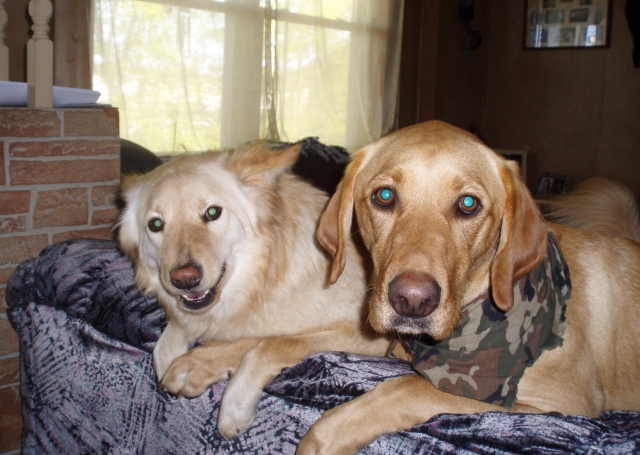QuestionI have a rescued Pomeranian that's about 5 years old. She is so sweet and we love her to pieces. But, she has some anxiety issues. Whenever we try to walk out the door she barks and barks and even sometimes gets so close to your legs that she'll accidentally pinch a little.
I tried to do crate training with her but she digs at the cage so much she makes her paws bleed. So, she has free reign of the house.
The thing is, if it was just when we were leaving we could handle it OK, but if she even "thinks" you're leaving, such as if you move too quickly or head down the hallway to the front room and she thinks you might go outside she barks.
She also barks when people come to the door or come in and wants to be held. That's not so bad. . .but I wnt to be able to move around my house and leave when I want without her getting so upset. My husband wants to use a shock collar with a training button but I don't want to do that to my 5lb Pomeranian! I do know that her previous owner used a bark collar on her at one point. :(
Where do we start?
Christine
AnswerGreetings, and thank you for contacting All Experts!
First of all, thank you whole heartedly for rescuing this girl, the world needs more people like you! I will offer some tips to hopefully help you out.
1) About the breed:
Pomeranians are adorable dogs, their foxy expression makes them quite irresistible. They are also a very happy, spirited and intelligent breed. They however can also be sassy and stubborn at times, and require owners that are capable of not spoiling them and pretty consistent in showing that ''they mean what they say''.
2) Do not feel sorry
When rescuing, owners often end up in the ''feeling sorry'' state of mind and are generally are
more lax in training. Please do not be, if this is your case. Your Pom needs firm leadership for her to learn her place in the pack and be calmer.
3) About the barking and ''nipping''
You are right about your Pom being anxious, but it is more in a controlling way. Her barking at you and the little ''pinches'' which by the way, there is no such thing as ''accidental pinches'' are all controlling behaviors. It is basically her way to say ''how dare you leave without my permission?''
You state '' I want to be able to move around my house and leave when I want'' this clearly demonstrates the level of control she has over you. She is basically attempting to control you and stopping you from leaving the home.
4) Too much responsibility
Now, you say she has free reign of the house. This gives dogs a lot of responsibility when they are left alone. They feel they need to control and protect the whole home and this can be overwhelming. Poms are territorial by nature, they make good watch dogs and will bark at every suspicious noise. But for a small dog the whole home may be too much. You can try to put baby gates and seclude her to a smaller area of your home, like a kitchen or bathroom if you cannot crate her. Leave her in a small room with a few Kongs with some treats inside and let her spend time occupied in getting them out. Leave the radio on or the t.v. to give some ''white noise'' If you are away for several hours, ask a friend or dog walker to come see her and keep her a bit entertained.
5) Crate training: back to basics
Crate training a dog that perhaps has never been in a crate all her life can be difficult. You need to take baby steps if you want to give it a try. Place the crate in your living room and keep it with the door open while you are with her watching television or relaxing.. Place a comfy blanket inside and put a stuffed kong inside or a pile of high value treats to lure her in. Keep the crate available for a week as a secluded comfy area for her to relax. She should get in and out on her own if interested. Give her time, she may have a liking of it once she realizes she is not locked in it. Do this for a couple of weeks while you work on her behavioral problem (using the methods outlined below -in step 6). When you leave the house, if you decide to put baby gates in a small room, leave the crate there too with a kong inside. Who knows-she may decide to spend time in there on her own!
Now, if during the two weeks she went inside the crate, it means she is starting to like it. If she never gets inside, it is sign she was too traumatized in it to have the will explore it. If this is the case, I would give up on it for some time and try again in a month or so. If she did get in, try putting a kong inside and locking her in and leaving the room. Expect a bit of commotion. When she is quiet open the crate without making any fuss. Repeat keeping her locked for longer times and always opening when she is quiet. Then eventually leave the home for a minute or two and record her behavior with a camcorder. You should be able to assess if she needs more time training, or if she is starting to get a hang of it. Always remember to give a stuffed kong when locking her in. Crate should equal great things!
6) Nothing in Life is Free
You do not need a shock collar, if you use a shock collar in anxious behaviors, you will only make problems worse. You must go to the root of the problem. I have a feeling she is a bit on the bossy side and is trying to manipulate you. Invest in the nothing in life is free training program. It can do wonders, here are some details:
http://dogtime.com/basic-obedience-tips-aspca.html
7) Correct the Barking Upon Leaving
In the meanwhile, while you implement ''nothing in life is free'' you need to put an halt to the barking and nipping. Since she does this when she senses ''cues'' you are about to leave, you can use this to your advantage. Purposely pretend you are about to leave, the moment she starts the whole barking behavior, drop a can filled with coins on the floor to startle her and stop the behavior in the tracks. The moment she stops, ask her to sit and give her a stuffed kong, this should keep her occupied for some time and should allow you to walk freely. Repeat over and over until it sticks in her mind that by barking she gets nothing but a noisy can, but by sitting and behaving she gets treats. If she tends to nip, spray some bitter apple spray on your ankles, she will not like the taste and will think twice next time.
8) Barking at people at the door
With these corrections coupled with the NILIF behavior modification program she should start relaxing a bit. Now about the barking at the door...
Barking at visitors is more likely due to feeling a threat. Poms are watchdogs and can be territorial. Ideally, a dog should bark only once or twice to alert the owner. If your Pom is doing more than that it may be she feels uncomfortable having visitors over. If you diligently work on pairing visitors with good things you can change her emotional state from being defensive to anticipating something good.
In order to accomplish this you need to invest in 100$ treats. In a dog's world, these are sliced hot dogs, freeze dried liver, pieces of skinless and boneless chicken, steak, etc. You will also need some volunteers. Very likely your girl starts barking right when somebody knocks on the door or rings the bell. Have the treats ready and have somebody knock on the door or ring the bell, keep your dog leashed to you if she has a tendency to run to the door. Every time the door bell rings or every time the knocking noise is made, your girl gets immediately a treat. Repeat until your girl will arrive at a point where she associates the door bell or the door knocking with the treat. You know this happens when she hears the noise and looks up at you anticipating the treat. At this point, congratulations, you have classically conditioned her to love that noise!
Once you have this down, have the visitor ring the bell and you open the door. The visitor will not look at your dog, talk to her or give her any attention he or she will just ignore her. If she starts barking you tell her ''quiet'' followed by a bunch of small treats. A dog cannot bark while it is eating! Repeat this until your dog pairs the presence of the visitor with the treats. You know this happens when every time you open the door she looks at you in anticipation of the treat.
Now work in progress. Have the visitor ring the bell, you open the door and the visitor steps in two steps. The visitor must ignore your dog. If she barks, say ''quiet'' and give her many small treats. Once quiet, have the visitor toss some treats in her direction. Have the visitor repeat this until she is looking at the visitor for treats. Repeat the whole sequel by having the visitor ring the bell, you open the door, if she barks say ''quiet'' followed by the treats, and the visitor takes more steps into the property giving treats. This has taught your dog two things: to be quiet on request and to associate guests with good things. Here is a helpful link outlining a similar behavior modification program:
http://dogtrainer.quickanddirtytips.com/barking-at-door.aspx#
9) Stop barking to be held
This confirms she is some little bossy princess! If she wants to be held and barks if she is not, the best thing to do is ignore her! If she barks and is held your guests are simply training her to bark to be held! The behavior will only reinforce and get worse. Ask you guests to ignore her if she barks to be held, if she continues, have the guest get up and leave the room for a second. Then have the guest sit down and if she is quiet ask her to sit, if she complies she gets attention and gets to be held! She needs to work in order to be held or get attention instead of getting free attention on command ''on her terms''.
10) About small dogs
There are countless small dogs with behavioral problems simply because they are small and cute.. and also people think they cannot hurt much if they nip. But if small dog owners could implement some rules on these little gals and guys, the results are wonderful and more balanced pets which is a win-win situation for all! I hope this has helped, my very best wishes!

 Rajapalayam dogs
Question
Rajapalayam dogs
good morning madam. are rajap
Rajapalayam dogs
Question
Rajapalayam dogs
good morning madam. are rajap
 Border collie help
Question
Miaya
Hi
We have a 16 week old border collie.
Border collie help
Question
Miaya
Hi
We have a 16 week old border collie.
 Puppy Yelping
QuestionQUESTION: Hi! I have a 6 month old Cocker
Puppy Yelping
QuestionQUESTION: Hi! I have a 6 month old Cocker
 breed identification
QuestionMaggie
QUESTION: Hello - Ive hopped over
breed identification
QuestionMaggie
QUESTION: Hello - Ive hopped over
 Snapping/Snarling problem
Question
Gypsy and George
We have an 18 month old pure
Snapping/Snarling problem
Question
Gypsy and George
We have an 18 month old pure